FUE Hair Transplant
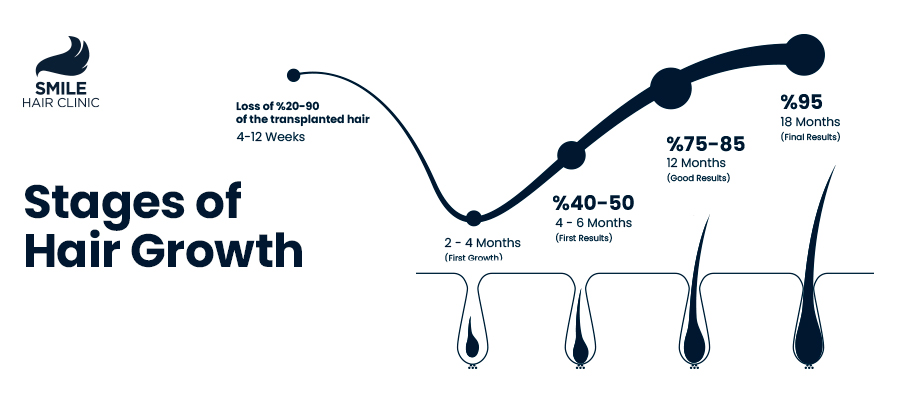
Publish Date: 9 September 2025
FUE Hair Transplant
- FUE (Follicular Unit Extraction) is a minimally invasive hair transplant technique that extracts individual hair follicles from donor areas using micro punches sized 0.7-1.2mm
- Unlike FUT strip harvesting, FUE leaves only tiny dot-like scars that are virtually invisible, even with short hairstyles.
- Success rates range from 95% to 100% with qualified surgeons, offering permanent hair restoration results that appear entirely natural.
- Recovery is faster than traditional methods, with most patients returning to work within 2-3 days, though full results take 12-18 months to develop.
- Ideal candidates are those over 25 with stabilized hair loss, realistic expectations, and sufficient donor hair reserves.
Hair loss affects millions worldwide, with male pattern baldness impacting up to 85% of men by age 50. For those seeking permanent hair restoration, follicular unit extraction has revolutionized the field of hair transplantation. This advanced FUE hair transplant technique offers natural-looking results with minimal downtime and virtually undetectable scarring.
Unlike outdated hair plugs or invasive strip harvesting methods, modern FUE hair transplants provide a sophisticated solution for those experiencing thinning hair or receding hairlines. With success rates exceeding 95% when performed by experienced hair surgeons, FUE represents the gold standard in contemporary hair restoration surgery.
This comprehensive guide explores everything you need to know about the fue procedure, from candidacy requirements and costs to recovery timelines and expected results.
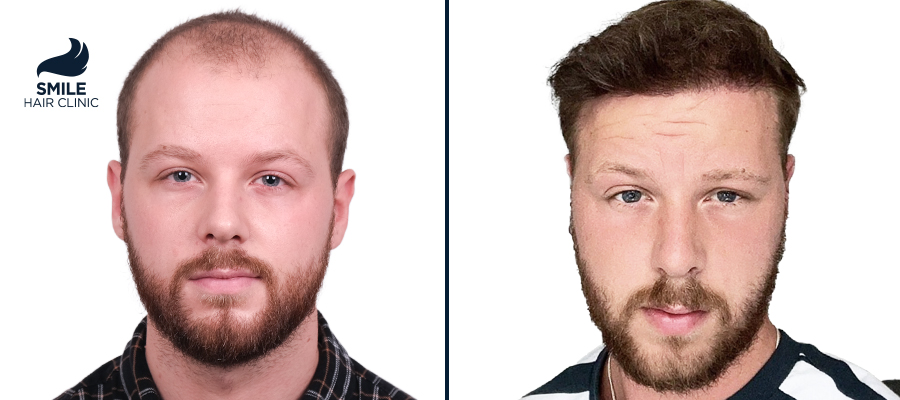
What is an FUE Hair Transplant?
Follicular unit extraction, commonly known as FUE, is a state-of-the-art hair transplant technique that involves harvesting individual hair follicles from donor areas and transplanting them to areas experiencing hair loss. Unlike traditional methods that require removing strips of scalp tissue, the FUE technique uses specialized micro-punch tools ranging from 0.7 to 1.2mm in diameter to extract individual follicular units.
Each follicular unit typically contains 1-4 naturally occurring groups of hair follicles, preserving the natural hair growth pattern. The fue method can be performed using manual punches, motorized tools, or robotic-assisted systems, depending on the surgeon’s preference and the complexity of the case.
The procedure involves extracting healthy hair follicles from the donor area (usually the back and sides of the scalp) and carefully implanting them into tiny incisions made in the recipient areas. This minimally invasive procedure yields permanent hair restoration with a completely natural appearance.
Modern FUE represents a significant advancement over older hair transplant methods, such as hair plugs, which often produce unnatural-looking results. The FUE hair transplant technique enables the precise placement of individual follicular units, resulting in seamless integration with existing hair.
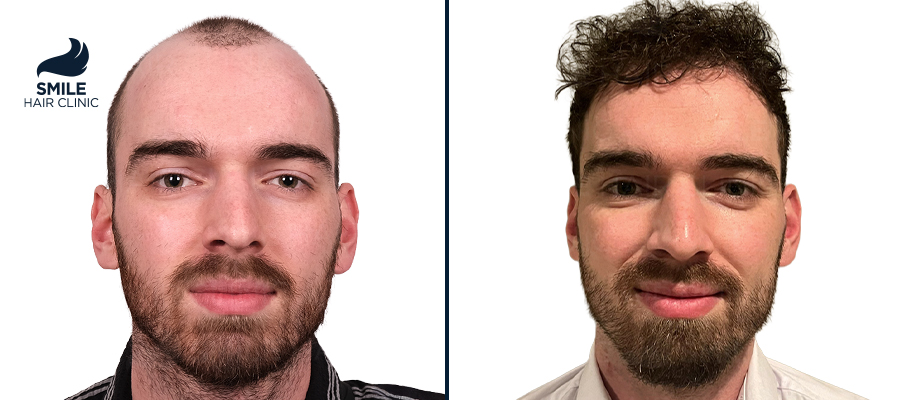
FUE vs FUT: Key Differences
Understanding the differences between follicular unit extraction and follicular unit transplantation (FUT) helps patients make informed decisions about their hair restoration surgery. FUT, also known as strip harvesting or strip excision, involves removing a linear strip of scalp tissue from the donor area to harvest hair follicles.
The most significant difference lies in scarring patterns. FUT procedures leave a linear scar across the back of the head, which can be visible with short hairstyles. In contrast, FUE creates only tiny, dot-like scars that are virtually undetectable, even with very short hair.
| Feature | FUE Hair Transplant | FUT Hair Transplant |
| Scarring | Tiny dot scars | Linear scar |
| Recovery Time | 2-3 days | 7-10 days |
| Hair Styling Options | All lengths | Requires longer hair to hide the scar |
| Procedure Time | 4-8 hours | 3-6 hours |
| Cost per Graft | Higher | Lower |
| Graft Yield | Lower per session | Higher per session |
Recovery time differs significantly between methods. FUE patients typically return to work within 2-3 days, while FUT recovery may require a whole week or more. The fue procedure also eliminates the need for stitches in the donor area, reducing post-operative discomfort.
Cost considerations vary, with FUE generally commanding higher per-graft fees due to the time-intensive extraction process. However, many patients find the benefits of minimal scarring and faster recovery justify the additional expense.
Benefits of FUE Hair Transplant
The fue hair transplant offers numerous advantages over traditional hair restoration methods, making it the preferred choice for many patients experiencing hair loss. The minimally invasive nature of follicular unit extraction provides significant benefits throughout the treatment and recovery process.
Minimal Scarring and Aesthetic Advantages
The most compelling benefit of the fue technique is virtually undetectable scarring. The tiny puncture wounds heal to form minor, dot-like marks that blend seamlessly with the surrounding scalp. This allows patients to wear their hair at any length, including buzz cuts or completely shaved styles, without visible evidence of hair transplant surgery.
Faster Recovery and Reduced Discomfort
Patients undergoing FUE hair transplants experience significantly less post-operative pain and swelling compared to strip harvesting methods. The absence of a large incision eliminates the need for stitches and reduces healing time. Most individuals return to their normal activities within 2-3 days, with full exercise resumption possible within a week.
Natural-Looking Results
The precision of individual follicular unit extraction allows surgeons to replicate natural hair growth patterns with exceptional accuracy. By carefully controlling the angle, direction, and density of transplanted hair, experienced hair surgeons achieve completely natural results that are indistinguishable from native hair growth.
Versatility in Donor Site Selection
FUE procedures aren’t limited to scalp donor hair. Body hair transplantation using chest, back, or beard hair can supplement scalp donor reserves when needed. This flexibility makes the FUE method suitable for patients with limited traditional donor areas.
No Linear Restrictions
Unlike FUT procedures that create tension and limit future hair transplants, FUE preserves the natural elasticity of the scalp. This allows for multiple future procedures if needed, providing long-term flexibility for progressive hair restoration.
Ideal Candidates for FUE
Determining candidacy for FUE hair transplants requires careful evaluation of multiple factors, including age, hair loss pattern, donor hair quality, and realistic expectations. Not everyone experiencing hair loss qualifies as an ideal candidate for follicular unit extraction.
Age and Hair Loss Stability
The most suitable candidates are typically over 25 years old, with a stabilized hair loss pattern. Younger patients may continue experiencing progressive hair loss, potentially requiring additional procedures. Many surgeons recommend medical therapy using finasteride and minoxidil to stabilize hair loss before considering surgical intervention.
Sufficient Donor Hair Reserves
Successful FUE procedures depend on adequate healthy hair follicles in the safe donor area (SDA). This region, typically located at the back and sides of the scalp, contains hair genetically resistant to androgenetic alopecia. Patients with extensive hair loss may have limited donor reserves, affecting the achievable density and coverage.
Hair Characteristics and Scalp Contrast
Certain hair types respond better to transplantation. Wavy or curly hair provides better coverage than straight hair, while thicker hair shafts create the appearance of greater density. Lower contrast between hair colour and scalp tone also produces more natural-looking results.
Realistic Expectations
Ideal candidates understand the limitations of hair transplantation and maintain realistic expectations about achievable results. A single FUE session typically transplants 1,500-4,000 grafts, which may not fully restore a completely bald scalp to its original density.
Medical History and Health Status
Good overall health and proper wound healing capacity are essential for successful outcomes. Patients should disclose their complete medical history, including medications, allergies, and previous surgeries. Conditions affecting healing, such as diabetes or autoimmune disorders, require special consideration.
Specific Conditions Suitable for FUE
- Male pattern baldness (androgenetic alopecia)
- Female pattern hair loss
- Alopecia areata (localized hair loss)
- Traumatic hair loss from accidents or burns
- Eyebrow or beard restoration needs
FUE Procedure Steps
The FUE hair transplant procedure is a meticulous process that typically requires 3-8 hours, depending on the number of grafts being transplanted. While specific techniques may vary between surgeons, all FUE procedures follow core elements that ensure optimal graft survival and aesthetic outcomes.
Pre-Procedure Planning
Comprehensive consultation begins weeks before the actual procedure. During this phase, the hair transplant surgeon assesses the patient’s hair loss pattern, the quality of the donor area, and their aesthetic goals. Advanced imaging may document the current state of hair loss and help project future progression.
The surgeon outlines both donor and recipient areas, discussing the planned hairline design with the patient. This collaborative approach ensures realistic expectations and patient satisfaction with the anticipated results. Calculating the required number of hair grafts helps determine whether the goals can be achieved in a single session or if multiple procedures will be necessary.
Blood tests and a medical history review ensure the patient is healthy enough for the procedure. Pre-operative instructions typically include avoiding certain medications and supplements that could affect bleeding or healing.
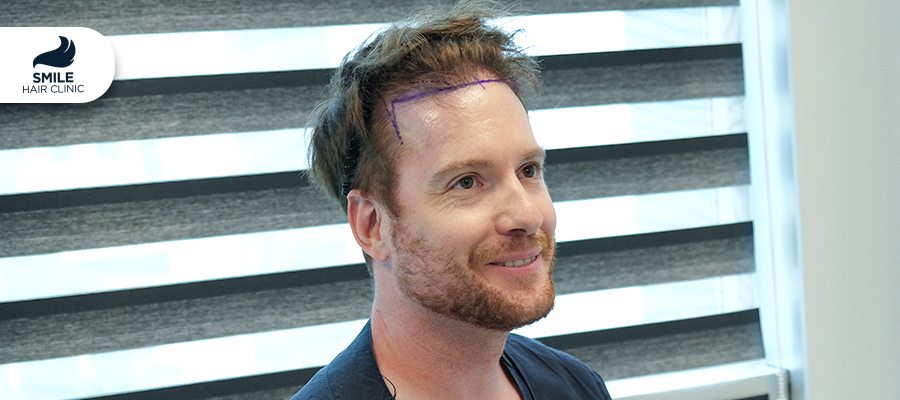
Anaesthesia and Preparation
On the day of surgery, local anaesthesia is administered to both donor and recipient areas of the scalp. This ensures complete comfort throughout the lengthy procedure. Some patients may opt for additional sedation methods, including oral medications, intramuscular injections, or intravenous sedation for enhanced relaxation.
The donor area is prepared by trimming the hair to approximately 2-3 millimetres in length, allowing for clear visualization of individual follicular units. This preparation is crucial for accurate extraction and minimizing damage to surrounding hair follicles.
Patient positioning is carefully arranged to provide the surgeon access while ensuring patient comfort during the extended procedure. Proper positioning prevents fatigue and maintains precision throughout the extraction and implantation phases.
Graft Harvesting
The extraction phase represents the most technically demanding aspect of the procedure. Using specialized punch tools, the surgeon carefully surrounds each targeted follicular unit with a circular incision. The depth and angle of extraction must be precisely controlled to avoid follicular transection and preserve the integrity of the hair follicle.
Individual follicular units are extracted using gentle traction, maintaining the natural curvature of the hair root. Extracted grafts are immediately placed in nutrient-rich preservation solutions to maintain viability until implantation.
Quality assessment occurs throughout the harvesting phase, with grafts examined under microscopic magnification to ensure structural integrity. Damaged or incomplete follicular units are discarded to maintain high standards for transplanted hair.
The harvesting process requires exceptional skill and patience, as each follicular unit must be extracted individually without damaging adjacent hair follicles. Experienced surgeons can extract 1,000-2,000 grafts per hour while maintaining low transection rates.
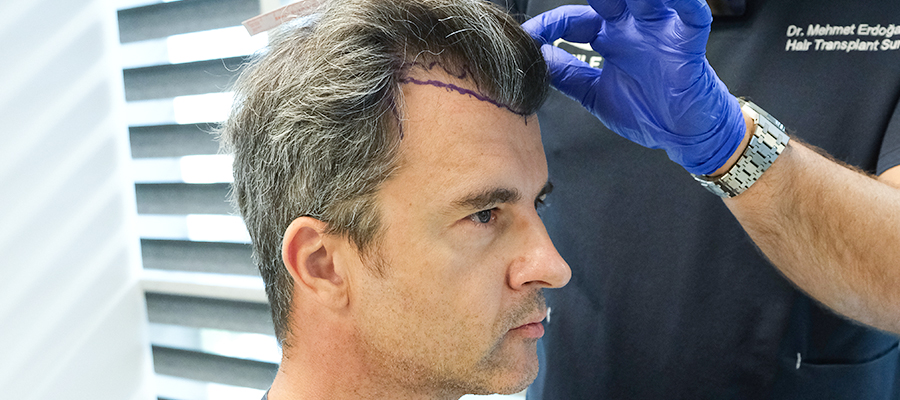
Recipient Site Preparation
Creating recipient sites requires artistic vision combined with technical precision. The surgeon makes tiny incisions (slits) in the recipient area, carefully controlling the angle, direction, and density to replicate natural hair growth patterns.
The timing of site creation varies among surgeons. Some prefer creating all recipient sites before graft placement, while others alternate between site creation and graft placement to minimize the time grafts spend outside the body.
Proper spacing between recipient sites ensures adequate blood supply for each transplanted follicle while achieving optimal density. The surgeon must consider the natural direction and angle of hair growth to ensure the transplanted hair integrates seamlessly with the existing hair.
Graft Placement
The final phase involves strategically placing harvested follicular units into the prepared recipient sites. Grafts are typically sorted by the number of hair follicles they contain, with single-hair grafts used for the hairline and multi-hair grafts providing density in other areas.
Each graft must be handled with care to prevent damage during placement. The surgeon ensures proper depth and orientation to promote survival and natural growth patterns. The placement process requires steady hands and artistic judgment to achieve natural-looking results.
Final area cleaning and protective bandaging complete the procedure. The donor area typically receives minimal bandaging, while the recipient area may be covered with a light dressing to protect the newly transplanted grafts.
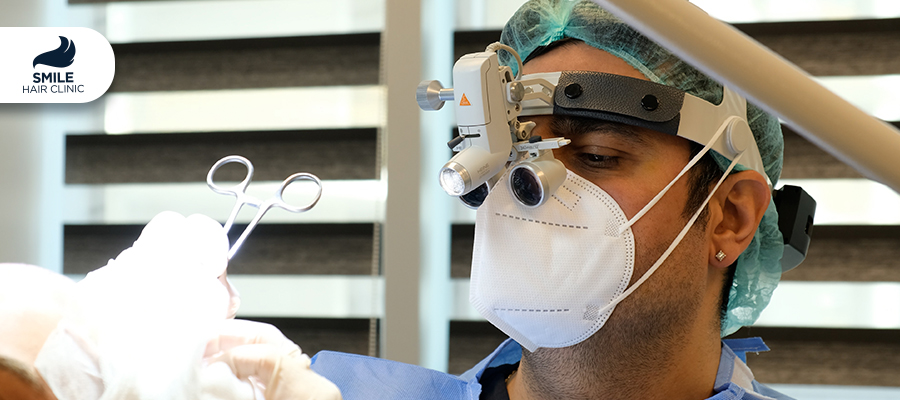
Recovery and Timeline
Understanding the recovery process helps patients prepare for their hair transplant journey and set appropriate expectations for the healing timeline. While individual experiences may vary, most patients follow a predictable recovery pattern, marked by specific milestones.
Immediate Post-Procedure Care (Days 1-3)
The first few days require careful scalp protection and adherence to post-operative instructions. Small scabs form around each transplanted hair follicle, which is a regular part of the healing process. Patients should avoid touching or scratching the treated areas to prevent graft dislodgement.
Sleep position becomes essential during this phase, with patients advised to sleep with their head elevated to minimize swelling. Ice packs may be recommended to reduce any forehead swelling that can occur after hairline transplantation.
Most patients can return to desk work within 2-3 days, though physical labour and strenuous exercise should be avoided for at least a week. Gentle hair washing typically begins 2-3 days post-procedure using specialized techniques to protect the grafts.
First Week Recovery
Scab formation continues during the first week, and patients may experience mild itching as healing progresses. The donor area typically heals faster than the recipient area, with any discomfort usually manageable with over-the-counter pain medication.
Follow-up appointments during this period allow the surgeon to monitor healing progress and address any concerns. Patients receive detailed instructions for hair washing and scalp care to optimize graft survival.
Weeks 2-3: Transplanted Hair Shedding
A critical phase occurs 2-3 weeks post-procedure when the transplanted hairs begin to shed. This process, known as shock loss, is an entirely normal and expected phenomenon. The hair shafts fall out while the follicles remain intact beneath the skin.
Many patients find this phase psychologically challenging, as it may appear that the procedure hasn’t worked. Understanding that this shedding is temporary and necessary for new growth helps patients navigate this period with confidence.
Months 2-3: New Hair Growth Begins
The exciting phase of new hair growth typically begins 2 to 3 months after the FUE procedure. Initial growth appears as fine, thin hair that gradually becomes thicker and stronger over time. This new hair growth follows the natural hair cycle, with each follicle progressing at its own pace.
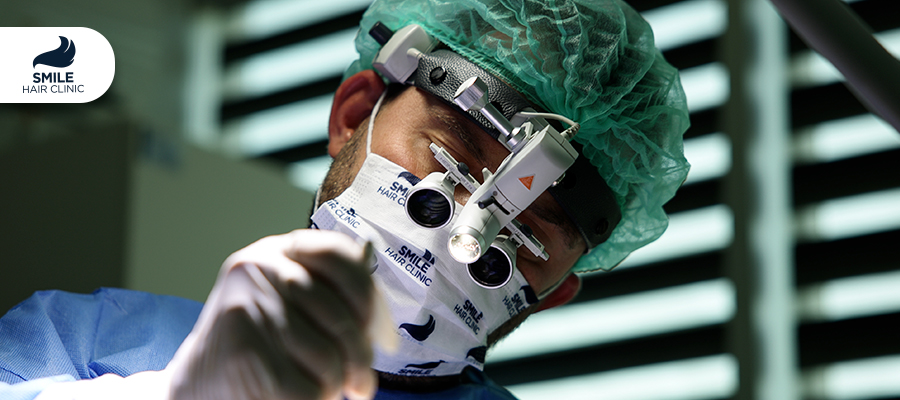
6 Months: Visible Improvement
Significant improvement becomes apparent around the 6-month mark, with approximately 60-70% of the final result visible. The transplanted hair continues to thicken and mature, providing noticeable coverage and density improvement.
12-18 Months: Full Results
Complete maturation of transplanted hair occurs between 12 and 18 months post-procedure. The final hair density, thickness, and natural appearance are fully realized during this timeframe. Some patients may see continued improvement even beyond 18 months.
Activity Restrictions and Guidelines
- Light exercise: Resume after 1 week
- Swimming: Avoid for 2-3 weeks
- Direct sun exposure: Protect for 2-3 months
- Hair styling products: Introduce gradually after 2 weeks
- Regular haircuts: Safe after 3-4 weeks
Results and Success Rates
The FUE hair transplant technique delivers impressive success rates when performed by qualified surgeons, with studies showing graft survival rates between 90% and 95%, and overall patient satisfaction exceeding 95%. Understanding what constitutes successful results helps patients set realistic expectations and evaluate potential outcomes.
Defining Success in Hair Transplantation
Success in FUE procedures encompasses multiple factors beyond simple hair growth. Optimal results include:
- High graft survival rates (90% or higher)
- Natural hair growth direction and angle
- Appropriate density for age and hair loss pattern
- Seamless integration with existing hair
- Undetectable donor site scarring
- Patient satisfaction with aesthetic outcome
Factors Affecting Transplant Success
Several variables influence the success of FUE hair transplants:
Surgeon Experience and Skill: The most critical factor determining success is the surgeon’s expertise in follicular unit extraction. Experienced hair restoration surgeons achieve higher graft survival rates and superior aesthetic outcomes through refined techniques and artistic judgment.
Patient Factors: Age, overall health, smoking status, and adherence to post-operative care significantly impact results. Younger patients with good circulation and healthy lifestyle habits typically experience better outcomes.
Hair Characteristics: The type, colour, and texture of hair affect the visual impact of transplanted hair. Wavy or curly hair provides better coverage than straight hair, while darker hair on light skin may require higher density for a natural appearance.
Realistic Expectations: Patients with appropriate expectations about achievable density and coverage report higher satisfaction rates. Understanding the limitations of available donor hair helps set realistic goals.
Graft Numbers and Coverage
Typical FUE sessions transplant between 1,500 and 4,000 grafts, depending on the extent of hair loss and donor availability. Here’s how graft numbers typically translate to coverage:
- 1,500-2,000 grafts: Hairline restoration or crown coverage
- 2,500-3,500 grafts: Moderate hair loss coverage
- 4,000+ grafts: Extensive hair loss (may require multiple sessions)
Long-term Permanence
Transplanted hair from the safe donor area maintains its genetic resistance to androgenetic alopecia, providing permanent results. However, native hair in other regions may continue to thin over time, potentially requiring additional procedures to maintain overall density and appearance.
Before and After Expectations
Realistic before-and-after comparisons show significant improvement in hair density and coverage, though results vary based on individual factors. Patients should expect natural-looking enhancement rather than restoration to original teenage hair density.
The transplanted hair grows, cuts, and styles like normal hair, allowing patients to return to their preferred hairstyles once fully healed. Many patients report improved confidence and satisfaction with their appearance following successful FUE procedures.
Risks and Side Effects
While hair transplants are generally safe procedures with high success rates, patients should understand potential risks and side effects before undergoing treatment. Most complications are minor and temporary; however, awareness helps patients make informed decisions and recognize when to seek medical attention.
Common Side Effects
Minor Scalp Cysts: Small cysts may develop around transplanted follicles during the healing process. These typically resolve spontaneously within a few weeks but may require minor treatment if persistent.
Mild Infections: Though rare with proper sterile technique, minor bacterial infections can occur at extraction or implantation sites. Antibiotic treatment typically resolves these issues quickly.
Forehead Swelling: Temporary swelling of the forehead and around the eyes may occur 2-3 days post-procedure, particularly after hairline restoration. This typically resolves within a week without treatment.
Temporary Telogen Effluvium: Some existing hair around the transplant area may temporarily thin or shed due to surgical trauma. This shock loss typically reverses within 3-6 months as regular hair cycles resume.
Psychological Impact During the Shedding Phase
The normal shedding of transplanted hairs 2-3 weeks post-procedure can cause significant anxiety for patients unprepared for this phase. Understanding that shedding is necessary for new growth helps patients navigate this period successfully.
Support from the surgical team during this critical phase proves invaluable for patient comfort and confidence. Many surgeons provide detailed timeline explanations and regular check-ins during the early recovery period.
Significant Risks and Serious Complications
Overharvesting Donor Area: Excessive extraction from the donor area can lead to visible thinning and permanently reduce future transplant options. This risk highlights the importance of selecting experienced surgeons who are familiar with the limitations of the donor area.
Harvesting Outside Safe Donor Area: Extracting follicles from areas susceptible to pattern baldness can result in transplanted hair that later falls out, defeating the purpose of the procedure.
Poor Aesthetic Outcomes: Inexperienced surgeons may create unnatural hairlines, incorrect hair direction, or inadequate density, resulting in an obviously transplanted appearance.
Nerve Damage: Though extremely rare, damage to scalp nerves can cause temporary or permanent numbness in treated areas.
Infection Prevention and Proper Aftercare
Minimizing risks requires strict adherence to post-operative care instructions:
- Keep the scalp clean using prescribed washing techniques
- Avoid touching or scratching treated areas
- Take prescribed antibiotics as directed
- Attend all follow-up appointments
- Report any signs of infection immediately
Choosing Qualified, Ethical Surgeons
The most effective risk reduction strategy involves selecting board-certified physicians with extensive experience in facial procedures. Red flags include:
- Unlicensed practitioners performing procedures
- Unrealistic promises about results
- Significantly below-market pricing
- Pressure to decide immediately
- Lack of proper medical facilities
Research from the International Society of Hair Restoration Surgery emphasizes that physician-performed procedures have significantly lower complication rates compared to those performed by non-physician providers.
Cost Considerations
The cost of hair transplants varies significantly based on multiple factors, making it essential for patients to understand pricing structures and budget appropriately for their hair restoration surgery. While fue procedures generally cost more than traditional strip harvesting, many patients find the benefits justify the additional expense.
Pricing Factors
Surgeon Experience and Reputation: Highly experienced hair transplant surgeons with excellent track records typically charge premium rates. However, the investment in skill and expertise often results in superior outcomes and fewer complications.
Geographic Location: Clinic location significantly impacts pricing, with procedures in major metropolitan areas costing more than those in smaller cities. International medical tourism has become popular, though patients should carefully research facility standards and surgeon credentials.
Procedure Complexity: Extensive hair loss requiring large numbers of grafts increases costs proportionally. Complex cases involving body hair transplantation or corrective procedures command higher fees.
Clinic Facilities and Technology: Advanced facilities with cutting-edge equipment and technology typically charge more than basic clinics. However, modern tools often improve results and reduce complications.
Pricing Structures
Per-Graft Pricing: Most FUE procedures are priced per graft, with rates typically ranging from $3 to $15 per graft depending on the factors mentioned above. Larger sessions often receive volume discounts.
Flat Fee Packages: Some clinics offer flat-rate packages for specific numbers of grafts or coverage areas. These packages may include additional services, such as PRP therapy or post-operative care.
All-Inclusive Pricing: Comprehensive packages may include consultation, procedure, medications, and follow-up visits in a single price. This approach helps patients budget accurately for the entire treatment process.
Cost Comparison with Other Methods
| Method | Average Cost Range | Scarring | Recovery Time |
| FUE Hair Transplant | $8,000-$20,000 | Minimal dots | 2-3 days |
| FUT Hair Transplant | $6,000-$15,000 | Linear scar | 7-10 days |
| Hair Systems | $1,500-$5,000/year | None | Immediate |
| Medications | $500-$1,500/year | None | Gradual |
Additional Costs to Consider
PRP Therapy: Platelet-rich plasma treatments may be recommended to enhance healing and results, typically costing $500-$1,500 per session.
Medications: Post-operative medications, including antibiotics and pain management, may add $100-$300 to total costs.
Follow-up Treatments: Some patients benefit from additional PRP sessions or low-level laser therapy, adding to long-term costs.
Travel and Accommodation: Patients travelling for procedures should budget for transportation, lodging, and time off work.
Insurance Coverage Considerations
Most insurance plans consider hair transplantation cosmetic and don’t provide coverage. However, procedures performed for medical reasons such as trauma, burns, or medical hair loss may qualify for partial coverage. Patients should verify coverage with their insurance providers before proceeding.
Financing Options
Many clinics offer financing plans to make fuel procedures more accessible. Medical credit cards and payment plans can spread costs over time, though patients should carefully review interest rates and terms.
Value Assessment
When evaluating hair transplant costs, consider the permanent nature of results compared to ongoing expenses for temporary solutions. Quality procedures performed by experienced surgeons often provide better long-term value despite higher initial costs.
Choosing the Right Surgeon
Selecting a qualified hair transplant surgeon represents the most critical decision in the FUE process, directly impacting both safety and aesthetic outcomes. With the growing popularity of hair restoration, patients must carefully evaluate surgeon credentials and avoid unqualified practitioners offering cut-rate procedures.
Board Certification and Specialisation
Look for surgeons certified by recognized medical boards with specific training in hair restoration surgery. Relevant certifications include:
- American Board of Hair Restoration Surgery
- American Board of Plastic Surgery
- American Board of Dermatology
- International Society of Hair Restoration Surgery membership
Specialized training in follicular unit extraction is essential, as the technique requires specific skills distinct from those of general surgery or dermatology. Many qualified surgeons complete fellowships or extensive training programs focused exclusively on hair restoration.
Evaluating Surgeon Credentials and Experience
Years of Experience: Surgeons with 5 or more years of dedicated hair restoration experience typically achieve better outcomes than those with limited FUE experience.
Volume of Procedures: High-volume surgeons who perform multiple FUE procedures weekly develop refined techniques and better aesthetic judgment.
Published Research: Surgeons contributing to medical literature and speaking at professional conferences demonstrate commitment to advancing the field.
Professional Affiliations: Active membership in organizations like the International Society of Hair Restoration Surgery indicates ongoing education and ethical practice standards.
Reviewing Before and After Portfolios
Comprehensive photo galleries showing actual patient results provide insight into the surgeon’s capabilities. Look for:
- Natural-looking hairlines without obvious transplant appearance
- Appropriate density for the patient’s age and hair loss pattern
- Multiple angles and lighting conditions
- Long-term follow-up photos showing mature results
- Variety of hair types and loss patterns
Be cautious of surgeons who use stock photos or present results that seem too good to be true. Legitimate practitioners provide extensive galleries of actual patient outcomes.
Patient Testimonials and Recommendations
Genuine patient reviews offer valuable insights into the surgical experience and outcomes. Look for reviews on multiple platforms and pay attention to:
- Detailed descriptions of the surgical experience
- Long-term satisfaction with results
- Communication and care quality
- Handling of any complications or concerns
- Overall recommendation likelihood
Clinic Facilities and Technology Standards
Modern fuel procedures benefit from advanced technology and proper facilities. Evaluate:
Sterile Surgical Environment: Procedures should be performed in accredited surgical facilities with proper sterilization protocols.
Advanced Equipment: Modern punch tools, robotic assistance, and preservation solutions improve outcomes and reduce complications.
Support Staff Training: Qualified technicians and nurses trained in the procedures contribute to successful outcomes.
Emergency Preparedness: Proper medical equipment and protocols for handling potential complications ensure patient safety.
Red Flags to Avoid
Unlicensed Practitioners: Non-physicians performing fue procedures pose serious safety risks and often produce poor results.
Unrealistic Promises: Surgeons guaranteeing specific results or claiming 100% success rates should be avoided.
High-Pressure Sales Tactics: Legitimate surgeons provide thorough consultations without pressuring immediate decisions.
Significantly Below-Market Pricing: Extremely low prices often indicate corners being cut in training, facilities, or technique.
Limited Consultation Time: Rushed consultations that don’t thoroughly evaluate candidacy and discuss expectations raise concerns.
Questions to Ask During Consultation
- How many FUE procedures do you perform monthly?
- What is your graft survival rate?
- Can you show me photos of patients with similar hair loss patterns?
- What happens if I’m not satisfied with the results?
- How do you handle complications?
- What is your total fee structure, including any additional costs?
- Can you provide references from recent patients?
Making the Final Decision
Choose surgeons who demonstrate technical expertise, artistic vision, and commitment to patient safety. The lowest price is rarely the best value when permanent aesthetic results are at stake. Take time to research thoroughly and don’t rush the decision-making process.
Consider consulting with multiple qualified surgeons to compare approaches and recommendations. Different perspectives help clarify the best strategy for your specific situation and goals.
FAQ
How long does a FUE procedure take, and do I need multiple sessions?
A typical FUE hair transplant takes 4-8 hours, depending on the number of grafts being transplanted. Sessions involving 1,500-2,000 grafts usually take 4-6 hours, while larger sessions with 3,000-4,000 grafts may require 6-8 hours. Some patients need multiple sessions to achieve their desired density, particularly those with extensive hair loss. The surgeon will determine during consultation whether your goals can be achieved in one session or if staged procedures would be more appropriate.
Can I exercise and swim after FUE hair transplant surgery?
Light, non-strenuous exercise can typically resume after one week, but you should avoid activities that cause excessive sweating or strain for the first 7-10 days. Swimming should be avoided for 2-3 weeks to prevent infection and protect the healing grafts from chlorine or bacteria. Heavy weightlifting and contact sports should be postponed for 2-3 weeks. Your surgeon will provide specific guidelines based on your healing progress during follow-up appointments.
What’s the difference between manual and robotic FUE extraction?
Manual FUE involves the surgeon using handheld punch tools to extract each follicular unit, providing complete control over angle and depth. Robotic FUE systems, such as ARTAS, utilize computer-guided technology to assist with extraction, potentially increasing speed and consistency for large sessions. Both methods can achieve excellent results when used by experienced surgeons. The choice often depends on surgeon preference, case complexity, and patient factors. Manual FUE offers more flexibility in challenging cases, while robotic systems can reduce surgeon fatigue during lengthy procedures.
Will people be able to tell I had a hair transplant?
When performed skillfully by experienced surgeons, FUE hair transplants should be completely undetectable. The key factors for achieving natural results include a proper hairline design, correct hair angle and direction, an appropriate density for your age, and seamless integration with your existing hair. The donor area scarring is virtually invisible as tiny dots rather than linear scars. Most people, including close family and friends, won’t be able to tell you’ve had a procedure unless you inform them. The transplanted hair grows, cuts, and styles exactly like your natural hair.
Can body hair be used as donor hair for FUE transplants?
Yes, body hair transplantation using chest, back, or beard hair can supplement scalp donor reserves when needed. This technique is beneficial for patients with limited scalp donor hair or those who require a large number of grafts. However, body hair has different characteristics than scalp hair – it’s typically shorter, may have a different texture, and grows at a different rate. Beard hair is most similar to scalp hair and provides the best results for body hair transplantation. Your surgeon will evaluate whether body hair would be beneficial for your specific situation during consultation.
Istanbul: The Global Capital of Hair Transplantation – Why Smile Hair Clinic Leads the Way
Istanbul has long been celebrated as a city where East meets West, a vibrant hub that blends culture, history, and modern innovation. In recent years, the city has gained another well-deserved reputation: the world’s capital for hair transplantation. Among the many clinics that call Istanbul home, Smile Hair Clinic stands out as the ultimate destination for those seeking the best possible results.
Istanbul: A Destination for Medical Excellence
Istanbul attracts thousands of medical tourists every year. The city’s strategic location, high-quality healthcare infrastructure, and competitive prices make it an ideal choice for patients worldwide. Travellers often combine their treatment with a chance to explore Istanbul’s rich heritage—from the majestic Hagia Sophia and bustling Grand Bazaar to the serene Bosphorus cruises.
But beyond the city’s cultural allure, Istanbul has established itself as a centre of medical innovation. Nowhere is this more evident than in the field of hair restoration, where advanced techniques and highly experienced surgeons deliver outcomes that rival—or even surpass—those of clinics in Europe and the United States.
Why Choose Smile Hair Clinic?
While many clinics operate in Istanbul, Smile Hair Clinic has earned international acclaim for its uncompromising commitment to excellence. Here’s why it is consistently regarded as the best choice for patients:
- World-Class Surgeons
Smile Hair Clinic is led by internationally recognized specialists who have dedicated their careers to mastering hair transplantation. Their precision, artistry, and medical expertise ensure every procedure is customized to the patient’s natural hairline and facial features.
- Cutting-Edge Technology
From advanced Follicular Unit Extraction (FUE) methods to motorised systems that minimise trauma and maximise graft survival, Smile Hair Clinic employs the most modern tools available. Patients benefit from faster healing times and denser, natural-looking results.
- Patient-Centred Care
Beyond surgical skill, Smile Hair Clinic is renowned for its holistic approach. Patients are supported at every stage—from consultation and travel planning to post-operative care and long-term follow-up. The clinic’s multilingual staff ensures international visitors feel at ease.
- Exceptional Value
Compared to the U.S. or U.K., where hair transplantation can cost two to three times more, Smile Hair Clinic provides the same (or higher) quality at a fraction of the price. This value, combined with Istanbul’s appeal as a travel destination, makes the experience both effective and enjoyable.
Fundamental Transformations, Real Confidence
For patients, a hair transplant is more than a cosmetic procedure—it’s a life-changing decision. At Smile Hair Clinic, the focus is not only on restoring hair but also on restoring confidence and self-esteem. Testimonials from patients worldwide highlight the clinic’s consistent ability to exceed expectations.
The Best Results in the Best City
Istanbul has become the epicentre of global hair transplantation, and within this city, Smile Hair Clinic shines brightest. With its world-class surgeons, innovative technology, and dedication to patient care, the clinic delivers the best possible results for those seeking to transform their appearance and boost their confidence.
For those considering a hair transplant, Istanbul is the destination, and Smile Hair Clinic is the clinic.
Last Update: 9 September 2025
 Whatsapp
Whatsapp